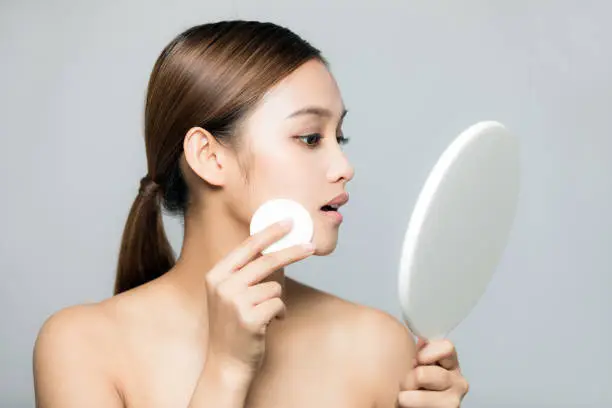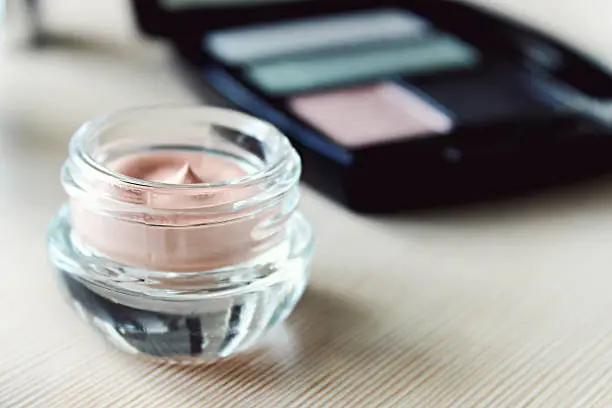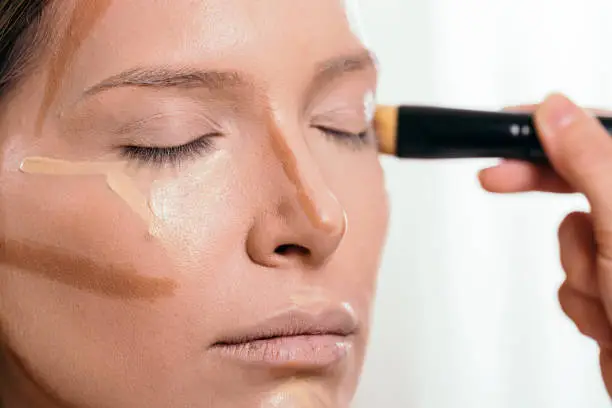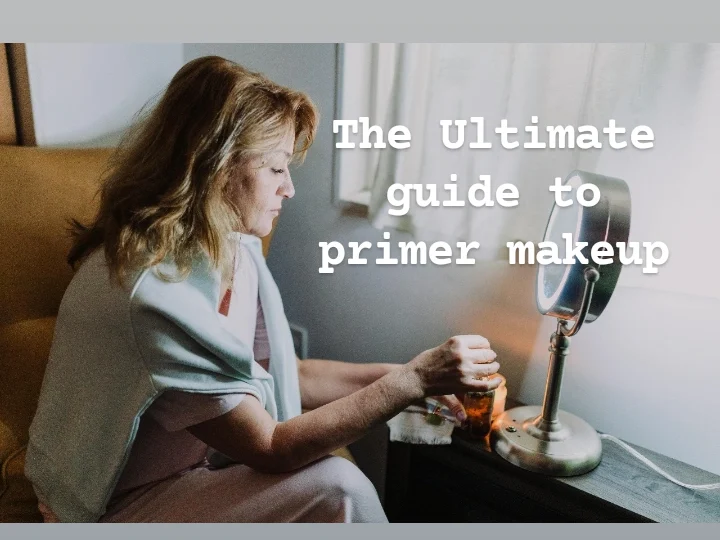The addition of primer makeup in step-slugging through the art of applying make-up has now become a necessity. Now what is a primer? How it is? And the most important question, how do you pick the most appropriate one in relation to which type of skin you have and what your needs are? This guide covers the ins and outs of primer makeup, including its advantages, how it goes on, and the different formulas that are out there.
What is Primer Makeup?
Primer makeup is a base product applied after accomplishing your skincare regimen and prior to applying your foundation. It wishes to offer coverage for cracks and other imperfections on the skin. In simple terms, it acts as a link between the two routines, helping both of them to be effective.
They can be1 in the form of gels, creams, and sprays or as more advanced forms of primer Makeup than the conventional powdered ones and there are always various problems addressed by these products. If your skin is oily, dry or combination, or whatever the case scenario, there is a particular designed primer for you.

The Benefits of Using a Primer makeup
One of the causes of woman applying a make-up primer is because it on the surface appears to be a clear form of make up. In most cases, it acts as a filler for fine wrinkles, creases, fine pores and even skin imperfections to provide a perfect surface for the base make up.
Makes Your Makeup Last Longer: Sometimes, your makeup may be said to be winged as it fades throughout the day, borders similar to soggy edges or is worn, such those by a drafter. It also ensures that the makeup stays for longer irrespective of extreme conditions like humidity or heat since a support base is provided.
Reduces the Risk of Makeup Improper’s: With a good primer makeup it easier to apply foundation and other products in which they are used. This is especially important when using powders in order to prevent skin from looking flaky on the surface.
Minimizes Oil Saturation: They help reach primer makeup lovers hot weather where normal wearing of cosmetics seems impossible. Hub and many others include long-wearing matte oil-free watercolor foundations or oil control primers that prevent the makeup from glucose or perspiration.
Banishing Dryness: Sometime when deciding to use primer, other suggestions include the added value of anti-aging, or even sun-protection benefits. These combine the use of lotions and some makeup masks.
Color Correction: These are popularly known for the green primer makeup which usually helps women with red skin and wants to cover it up. It is normal for people to have underlying tones usually yellow but they will usually be all covered by foundation.
How to Choose the Right Primer makeup for Your Skin Type This section will explore the factors to consider when selecting a suitable primer for your skin type.
Oily Skin: Due to the excessive oil on your skin, make sure you use a mattifying primer which controls the shine and minimizes the pore appearance. Products such as salicylic acid or clay can help a person, whose oily skin is helping their makeup stay put.
Dry Skin: In the case of dry skin, a moisturizing primer makeup would be better as this would ensure fresh skin with a glowy look. Search for compounds like hyaluronic acid and glycerin or even aloe vera to keep moisture and make the surface smooth and volumptuous.
Combination Skin: A balancing primer makeup would be suitable for combination skin types since this would help in soothing oily patches as well as dry patches without clashing with the skin. Use the right primer for the right part of the face – the cheeks would rather be hydrated while the T-zone would have matte primer.
Sensitive Skin: If your skin is sensitive, always choose a primer to put on that is fragrance free, non-comedogenic and contains calming properties such as chamomile or green tea extracts.
Mature Skin: For mature skin, an anti-ageing primer makeup may be useful. Choose primers with polish for fine lines and wrinkles, or with these ingredients to help maintain skin elasticity, firmness due to antioxidants or peptides.
How to Apply Primer Makeup
Primer makeup is an uncomplicated makeup technique, but it is likely to transform your make-up application for the better.
Start with Clean, Moisture on the Skin: It is a must to wear a primer after a skincare product is applied. Take care that your skin is clean and no traces of the moisturizer are visible on the face before you advance to the application of a specific primer makeup.
Use a Small Amount: More often than not, the primer makeup comes in a little tub and so it is not shocking that we end up slathering more of it than required. Use only a small sized piece of creamy prime and start from the nose, going to cheek, forehead and chin in that order. If necessary, you can even add more.
Use Fingers or a Brush to Apply the Primer makeup: You can apply primer makeup with your fingers by dab and pat the primer makeup gently on your face. It is advisable to apply more on those areas where more is needed like the T-zone or on the higher side of large pores. Otherwise, a makeup brush can be used for this same purpose but the application will be more directed.
Let It Sit: Let the primer settle for a few minutes, preferably not more than 5, and continue to the application of your foundation. Avoid skipping this as applying too soon will not allow the primer to achieve its intended purpose.

Proceed with the rest of your makeup: When applying a foundation, wait for the primer to dry out first. This is important for an even application of the foundation. After the primer has dried, you can go to face foundation and after that than the other makeup products. You will probably observe that the aromatic foundation goes down on the skin evenly.
Description of various types of primers and their functions
Silicone Based Primers: These are the kinds of primers that help to fill in the very fine lines and contain the best smoothening properties. They are also capable of blurring imperfections giving one’s skin a velvety effect. However, those with sensitive skin may have to be careful with them since silicones sometimes cause skin breakouts for acne prone complexions or sensitive skins.
Water Based Primers: Suitable for sensitive or angry, prone skin, to which water based primers are less amusing, also the skin appears to be heavy. Provides moisture and natural finish but light.
Illuminating Primers: The whole purpose of an illuminating primer is to make your skin looking radiant and glowing, so if it’s what you after this type primer is for you. Those are called illuminating because they add light to the skin. Magic for dry or dull skin.
Mattifying Primers: These types of priming products tend to mainly cater for people with oily skins. These types of pore refiners work by absorbing surplus oil and reducing shine for a glamorous and shine free look.
Pore Minimizing Primers: Our pore plumping primers are directed to large pores, such that they will work on primary leveling. By filling in the pores these primers ensure that the skin has a smooth leveling in the areas where makeup is to be applied causing less visibility of the pores.
Color-Correcting Primers: Vertical colors are tinted for people with certain skin tone problems. For example, primers with a green tint can hide red tones while those with purple color enhance a dull or a yellowish skin.…
Common Mistakes to Avoid
Using too much Primer: More is not always the best way to go. Applying too much primer can make the makeup tend to slide all over or rather appear thick. It may prefer starting with a little bit then adding it on when necessary to avoid.
Skipping Moisturizer: Moisturiser in this case is not an option for the skin before application of the primer. Even if the person has oily skin including it always ensures that the skin is in good condition is very important.
Not Allowing Primer to Set: It has been relatively found to be a social faux pas in that applying the foundation immediately after applying the primer won’t allow the primer to work to perfection. Wait a few minutes after applying your primer before proceeding with the next task.
Not Owing the Right Primer for Your Skin Type: Some things work wonders on other people while miserable for others. Go for the appropriate one based on your skin and specific concerns for intensive care.

You may like:- The Mask of Confidence: Understanding the Great Power and Perils of Projected Self-Assurance
Manicure Pedicure: Pamper Your Hands and Feet
Facial Serum: An Important step toglowing skin
Mascara Facial-Way to glowing skin in 10 mins
Conclusion
For many people, adding a primer to a makeup routine feels like having a hidden ace in the game. It helps to smoothen the surfaces in the face, fights excess oil or shines on the skin, and generally helps in prolonging the duration of the makeup. Therefore, it means that whenever the need to wear make up comes up and the skin is prepared, there are no chances of forgetting the primer as it is a step that changes everything.
THANK YOU AND KEEP LOVING…….
